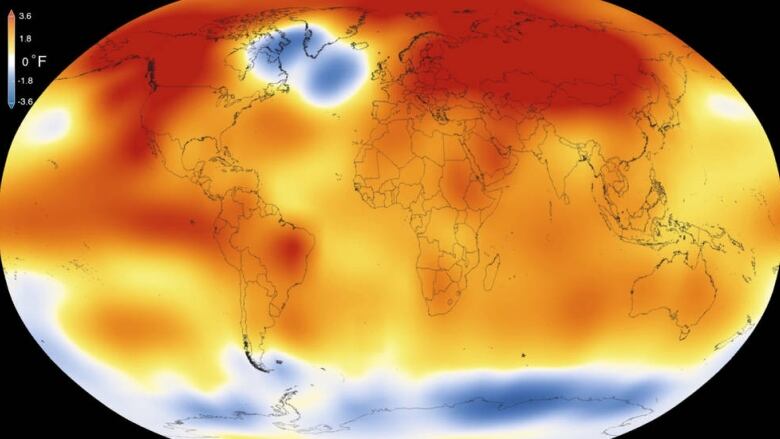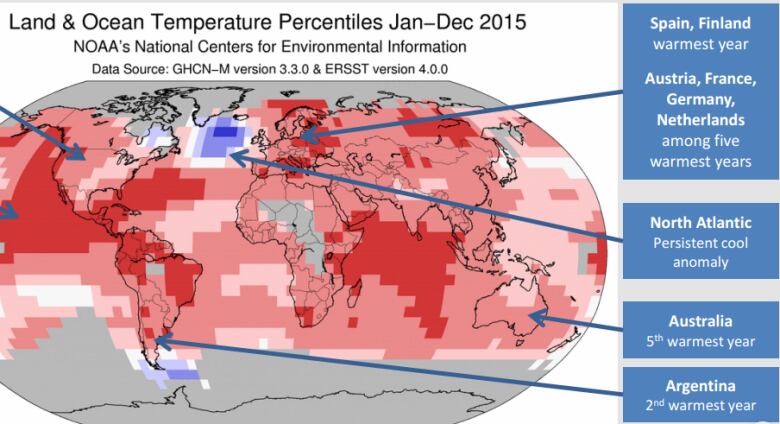Eastern Arctic bucks 2015 global warming trend: NASA
Experts at odds over eastern Arctic anomaly

Most of the planet set record-high temperatures last yearbut cooltemperatures prevailed in parts of theeasternArctic,northernQubecand Labrador, and southern Greenland,says a report released this week by NASA and the National Oceanic and Atmospheric Administration (NOAA).
"Those kinds of areas look like the signature of something going on with the ocean currents, because they do stand out," saidGavin Schmidt, the director of the NASA Goddard Institute for Space Studies in New York.
Schmidt says there are a few theories as to why the ocean's current caused the anomaly. One is that melting ice from Greenland and the Arctic flowed into the Atlantic ocean's current and essentially drowned out the warmer water rising from the South Atlantic.
"Anyinterruption in that circulationreally slows down the amount of heat that's being pushed towards the North, and that manifests itself into cooler [temperatures]," Schmidt said, adding it's not clear whether the colder temperature is a response to global warming, or a one-off.
But Canada's research chair in Arctic sea ice geophysics thinks otherwise.
Christian Haas, a professor at York University, says ifmeltwater was flowing into the Atlantic Ocean, it would actually create warmer temperatures.

He says the water in the North Atlantic sinks down to deeper depths because of the colder climate. So more freshwater flowing from the melting caps would stay on the surface longer and actually create a warming effect.
"This cooler temperature is moreor less unique to this one year and doesn't mean that on average temperaturesdon't increase as well,"Haas said. "The fact that this region stands out alone and the rest of the Arctic iswarmingdoesn't mean that that region is better off."
Environment Canada dubbed last winter the coldest in 22 years in the eastern Arctic, and Haas says it likely has to do with the global distribution of winds last year.
Haas says there's also a chicken-and-the-egg scenario at play. Because of the colder winter, ice in the area stayed for much longer than normal in Iqaluit hunters were travelling on Frobisher Bay on Canada Day thus causing cooler summer temperatures.
Weather Network meteorologist Doug Gillham says when it comes to the winds, a strong El Nio is to blame. As for this winter, Weather Network broadcasterChris Murphy says this winter in the eastern Arctic isn't expected to pack as much of a punch as last year, and temperatures should be back to seasonal norms.












_(720p).jpg)


 OFFICIAL HD MUSIC VIDEO.jpg)
.jpg)



























































































